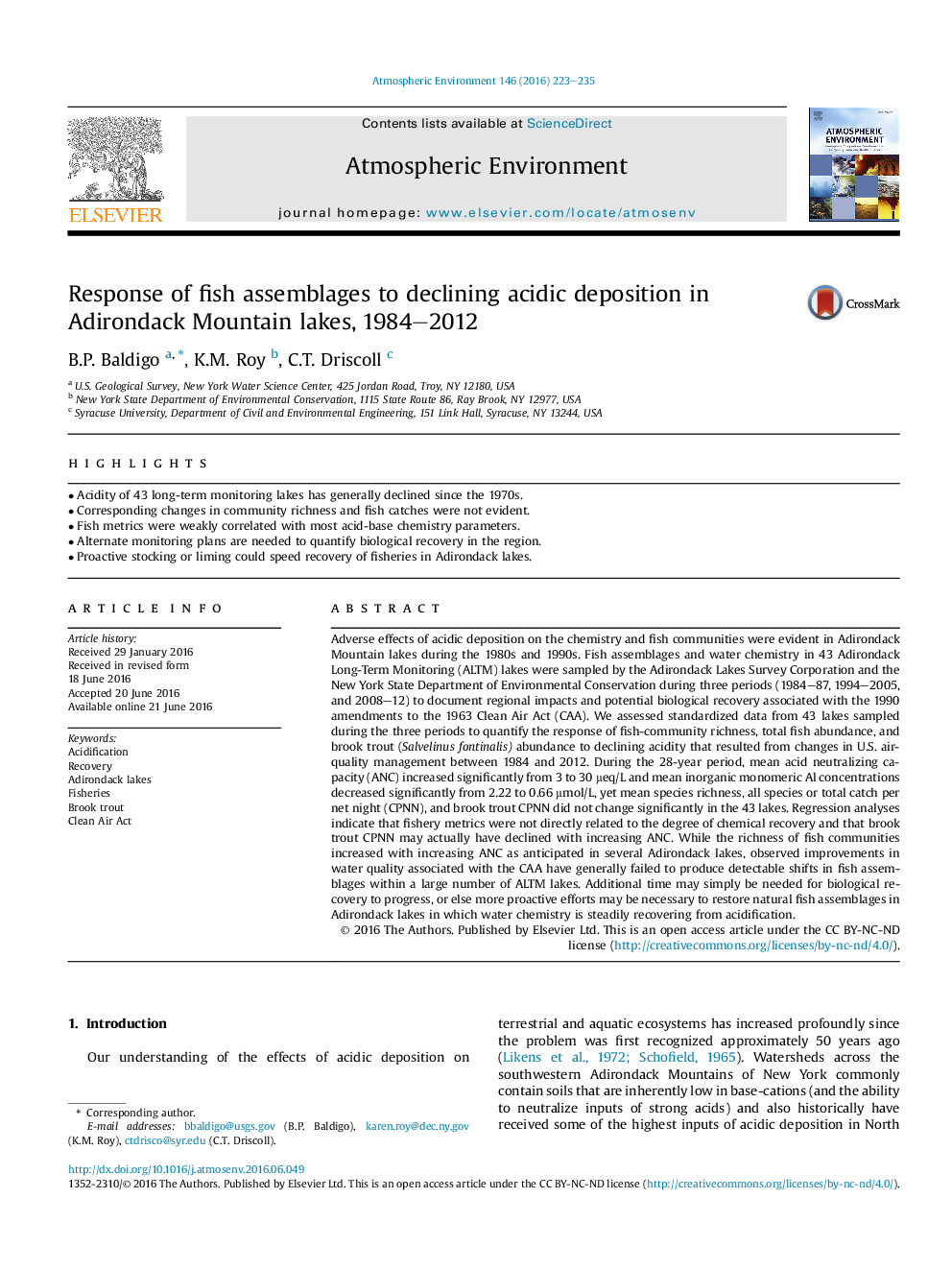| Article ID | Journal | Published Year | Pages | File Type |
|---|---|---|---|---|
| 5753277 | Atmospheric Environment | 2016 | 13 Pages |
â¢Acidity of 43 long-term monitoring lakes has generally declined since the 1970s.â¢Corresponding changes in community richness and fish catches were not evident.â¢Fish metrics were weakly correlated with most acid-base chemistry parameters.â¢Alternate monitoring plans are needed to quantify biological recovery in the region.â¢Proactive stocking or liming could speed recovery of fisheries in Adirondack lakes.
Adverse effects of acidic deposition on the chemistry and fish communities were evident in Adirondack Mountain lakes during the 1980s and 1990s. Fish assemblages and water chemistry in 43 Adirondack Long-Term Monitoring (ALTM) lakes were sampled by the Adirondack Lakes Survey Corporation and the New York State Department of Environmental Conservation during three periods (1984-87, 1994-2005, and 2008-12) to document regional impacts and potential biological recovery associated with the 1990 amendments to the 1963 Clean Air Act (CAA). We assessed standardized data from 43 lakes sampled during the three periods to quantify the response of fish-community richness, total fish abundance, and brook trout (Salvelinus fontinalis) abundance to declining acidity that resulted from changes in U.S. air-quality management between 1984 and 2012. During the 28-year period, mean acid neutralizing capacity (ANC) increased significantly from 3 to 30 μeq/L and mean inorganic monomeric Al concentrations decreased significantly from 2.22 to 0.66 μmol/L, yet mean species richness, all species or total catch per net night (CPNN), and brook trout CPNN did not change significantly in the 43 lakes. Regression analyses indicate that fishery metrics were not directly related to the degree of chemical recovery and that brook trout CPNN may actually have declined with increasing ANC. While the richness of fish communities increased with increasing ANC as anticipated in several Adirondack lakes, observed improvements in water quality associated with the CAA have generally failed to produce detectable shifts in fish assemblages within a large number of ALTM lakes. Additional time may simply be needed for biological recovery to progress, or else more proactive efforts may be necessary to restore natural fish assemblages in Adirondack lakes in which water chemistry is steadily recovering from acidification.
